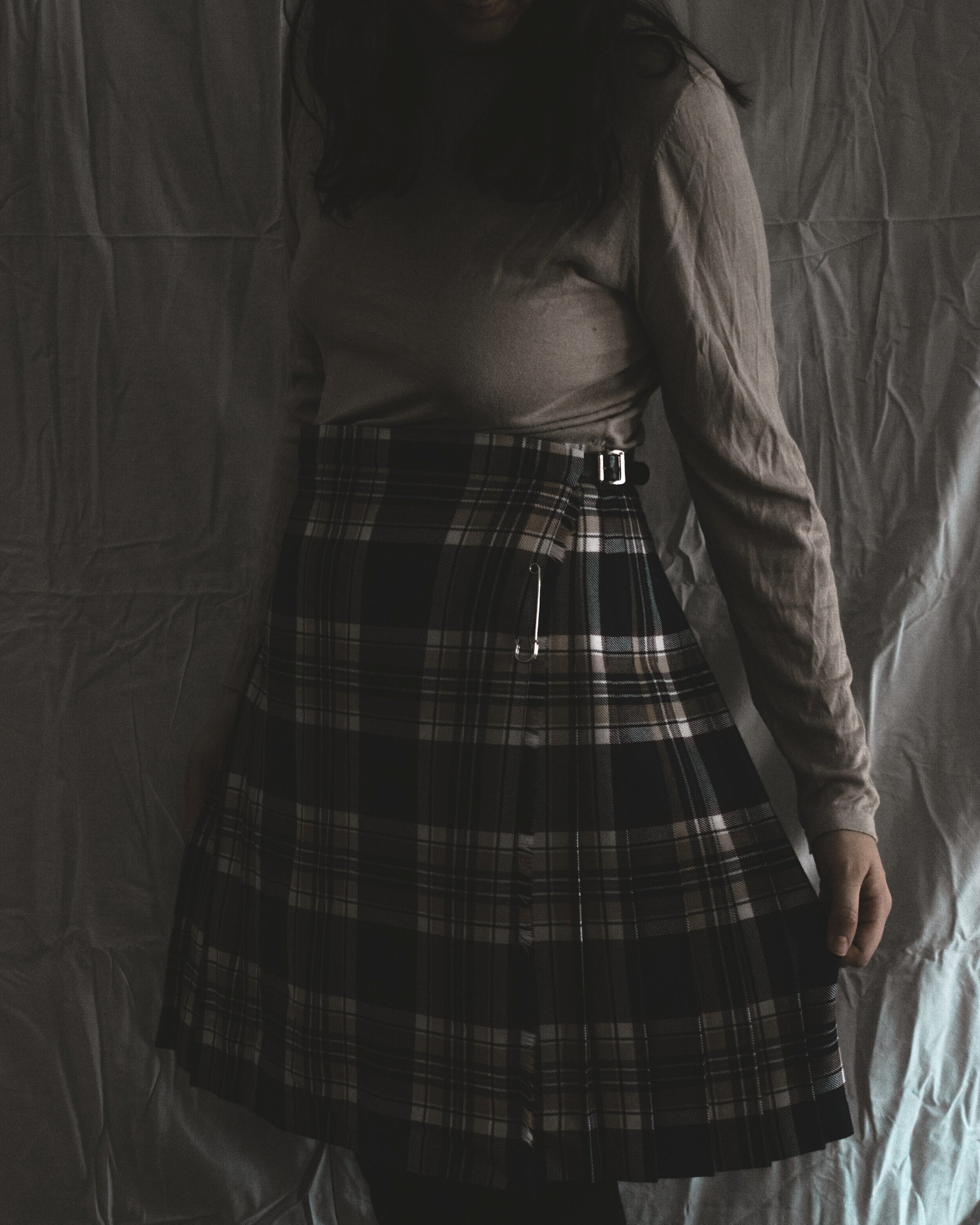When we think of a kilt, we immediately envision a knee-length woollen skirt, plated at the back, usually decorated with crossing woven threads.
And we are also likely to associate it to literature and screen heroes like William Wallace, Jamie Fraser, Scrooge McDuck… :)
But there’s a lot more to it.
Kilts originate in the Scottish Highlands, as early as the 16th Century, as a full length, belted male cloak that could be draped over the shoulder with a brooch, or worn over the head as a hood. It is known as great kilt or great plaid (fèileadh mòr).
What we are familiar with today is known as small kilt (fèileadh beag), or walking kilt, which started spreading in the 18th Century. It is said to have been purposely created by quaker Thomas Rawlinson, for more freedom of movement of the Highlanders he employed in logging, charcoal manufacture and iron smelting.1
The word kilt, in the Scots language, means “to tuck a garment around the body”, but seems to be deriving from the Old Norse word kjalta (fold; lap; gathered skirt).1
Nowadays, kilts remain widely popular and are still worn in formal or semi-formal occasions. The most common accessories that go with a kilt are a pair of hose (woollen socks), a sporran (waist pouch) and a kilt pin.
However, the most meaningful and fascinating part of a kilt is, without a doubt, the woollen check material it is made of - also known as tartan.
There are a couple of theories about the origin of the term tartan. Some believe it originates from the French term tartarin, meaning “Tartar cloth”; others suggest it comes from Gaelic - either from tarsainn (“across”) or from the combination of the words tuar and tan (“color” and “district”).2
However, originally, tartans did not necessarily present any pattern: in fact, in the Scottish Highlands, people would specifically refer to a patterned cloth as breacan (“many colors”).
Historically made of wool, tartans are characterized by a deeply intricate construction: its pattern consists of a series of pre-dyed woven threads, intersecting at right angles to form colorful squares. This is called sett, of which numerous combinations exist.
Because of the way they are interwoven, the threads produce at least two base colors and one mixture: so the more the colors and stripes, the more intricate and subdued the pattern will appear.3
Depending on how the fabric is dyed, tartan colors are defined as modern (chemically dyed); ancient (lighter shades that resemble aging colors); and muted (a mid-way between modern and ancient, considered the most similar to the natural dyes used before the mid-19th Century).
Although associated with Gaelic people and more specifically Scots, early examples of “tartans” were found in the most disparate parts of the world.
In 2004, tartan-like textile was found in Hallstat salt mines near Salzburg, which historian E. J. W. Barber associates to Celtic populations that settled there between the 8th and 6th Century BC. This is considered to be the closest “relative” to what we know today as tartan.
However, incredibly similar textiles have been found even on Tarim mummies of Xinjiang and on the 3,000-year-old Cherchen Man of the Taklamakan Desert.
The first documented tartan-like fragment in the British island dates back to the 3rd Century AD and it is known as the Falkirk tartan, discovered in Stirlingshire, near the Antonine Wall - making it plausible that such forms of tartan may have been popular in the northern Roman provinces.4
Scottish tartans are notoriously associated with clans, as much as they have become a true heritage symbol.
However, it is not clear when this tradition was born, and some even consider it as “invented”. It seems plausible that “clan tartans” started raising only at the beginning of the 19h Century.
They were most definitely not in fashion during the Battle of Culloden in 1746, despite their portrayal in some paintings. Nevertheless, events like the Proscription Act of 1747 - aimed at conquering the Highlands and destroying the clans system - may have originated the thought of such association.
And it is at the beginning of the 1800 that tartans started being registered.
Although nowadays “tartans” and “clan tartans” are a key cultural and identity factor to Scottish clans, but also to Scotland as a whole, the actual registration of tartans began quite late in the days, and only in recent years a dedicated, official Database was put into place.
The first tartan registrations were taken care of by the Highland Society of London (founded in 1778), often times followed by an “authentication” through Lord Lyon King of Arms.
But these were never considered as official, central tartan registries - in fact, there were independent organizations spread all over the world documenting and recording tartans up until the 20th century.
It was only in 2008 that the Scottish Register of Tartans (SRT) was established by an act of the Scottish Parliament. This Database is managed by the National Records of Scotland and builds on the records collected by multiple organizations such as the Scottish Tartans Society and the Register of All Publicly Known Tartans. Its thoroughness is such that it also encompasses registered tartans of clans from other Gaelic / Celtic nations, and it is estimated that about 3,500 to 7,000 different tartans exist, with around 150 new designs being created every year.5
As many other traditional garments, various tartan declinations exist to meet different social situations (hunting tartans, mourning tartans…).
Tartan is so iconic that it has become a fashion item as well as the emblem of certain subcultures - think of the trademarked Burberry check, or Vivienne Westwood and the punk culture.
But first and foremost, it is a timeless symbol of an incredibly vast and fascinating culture that never ceases to amaze
Sources
1) https://books.google.it/books?id=sfvnNdVY3KIC&pg=PA15&redir_esc=y#v=onepage&q&f=false
2) https://palmerdesignsscotland.com/blogs/whats-new/how-is-tartan-made-where-does-it-come-from
3) https://en.wikipedia.org/wiki/Tartan#B
4) http://nms.scran.ac.uk/database/results.php?QUICKSEARCH=1&search_term=falkirk+tartan



